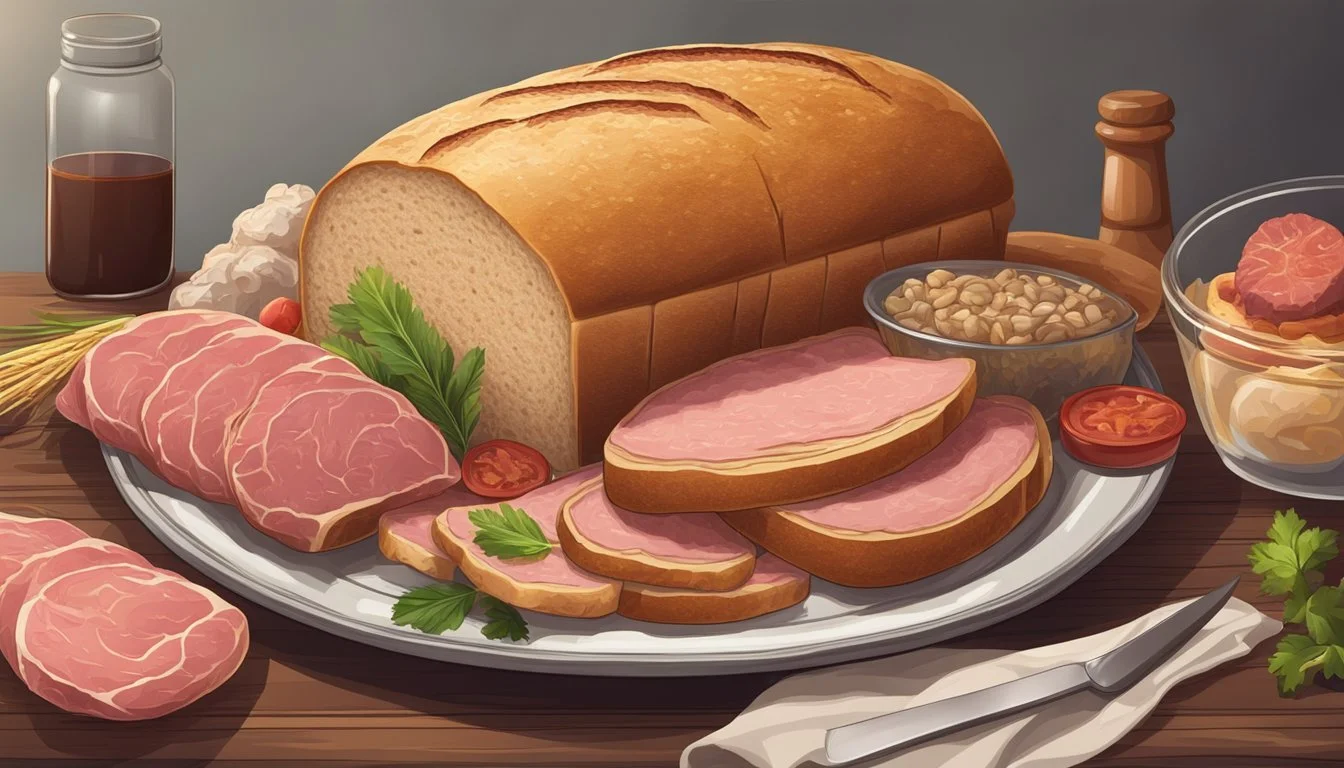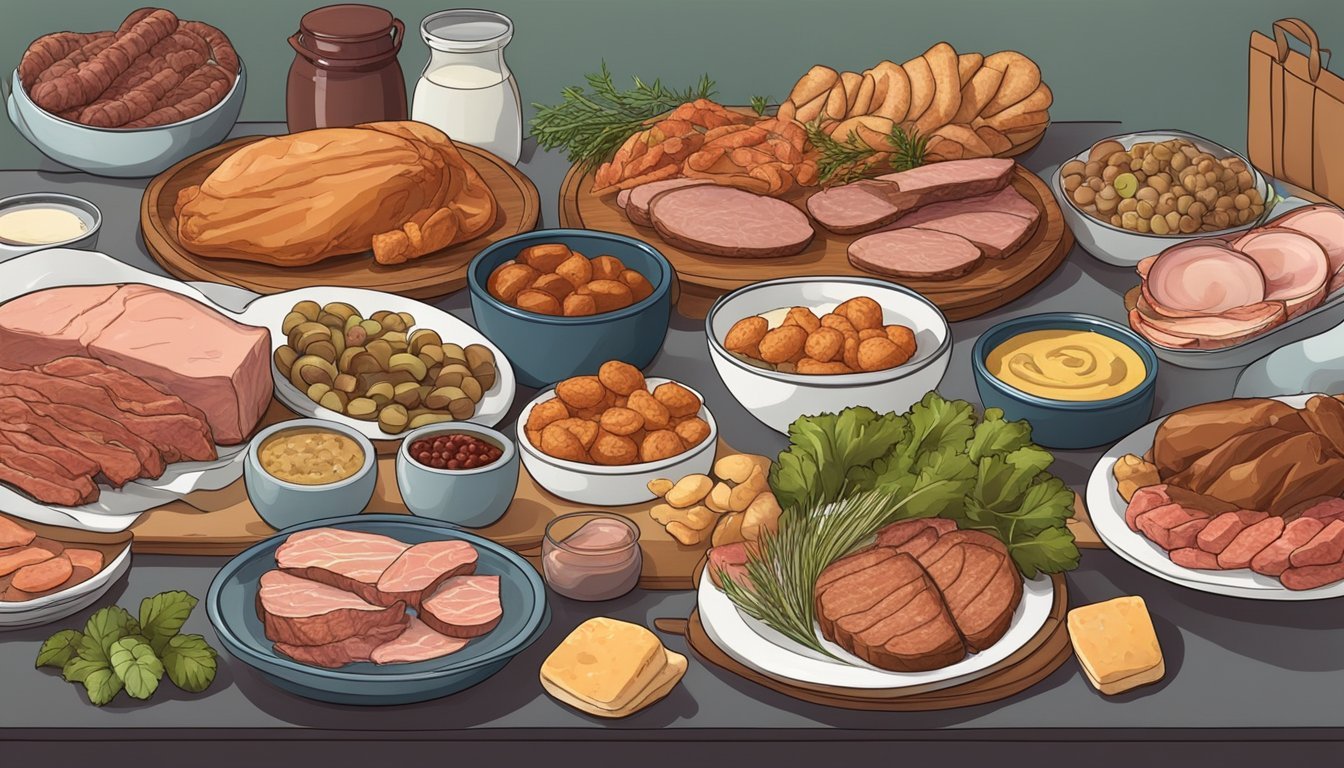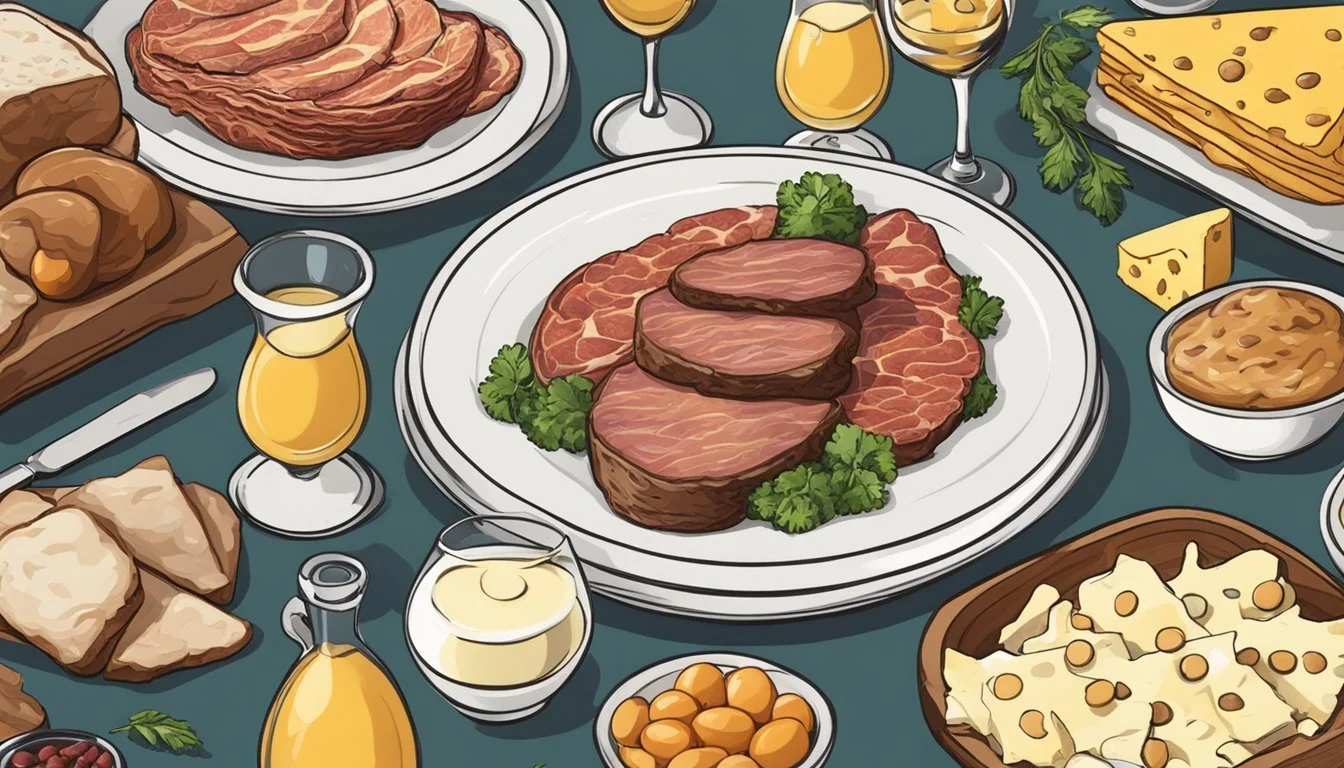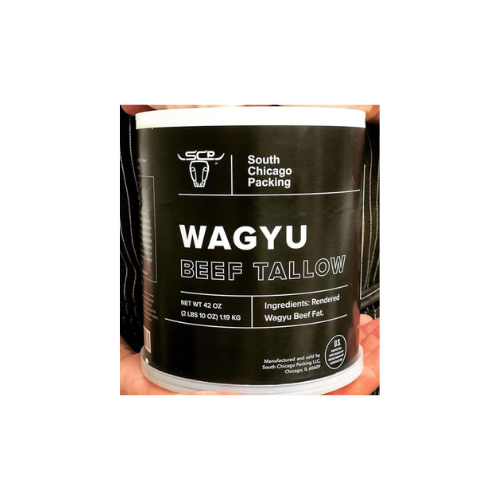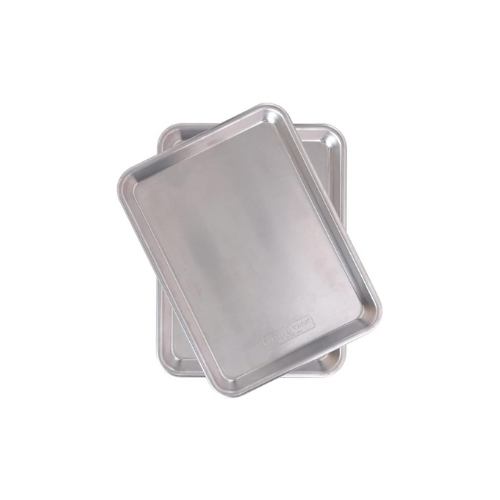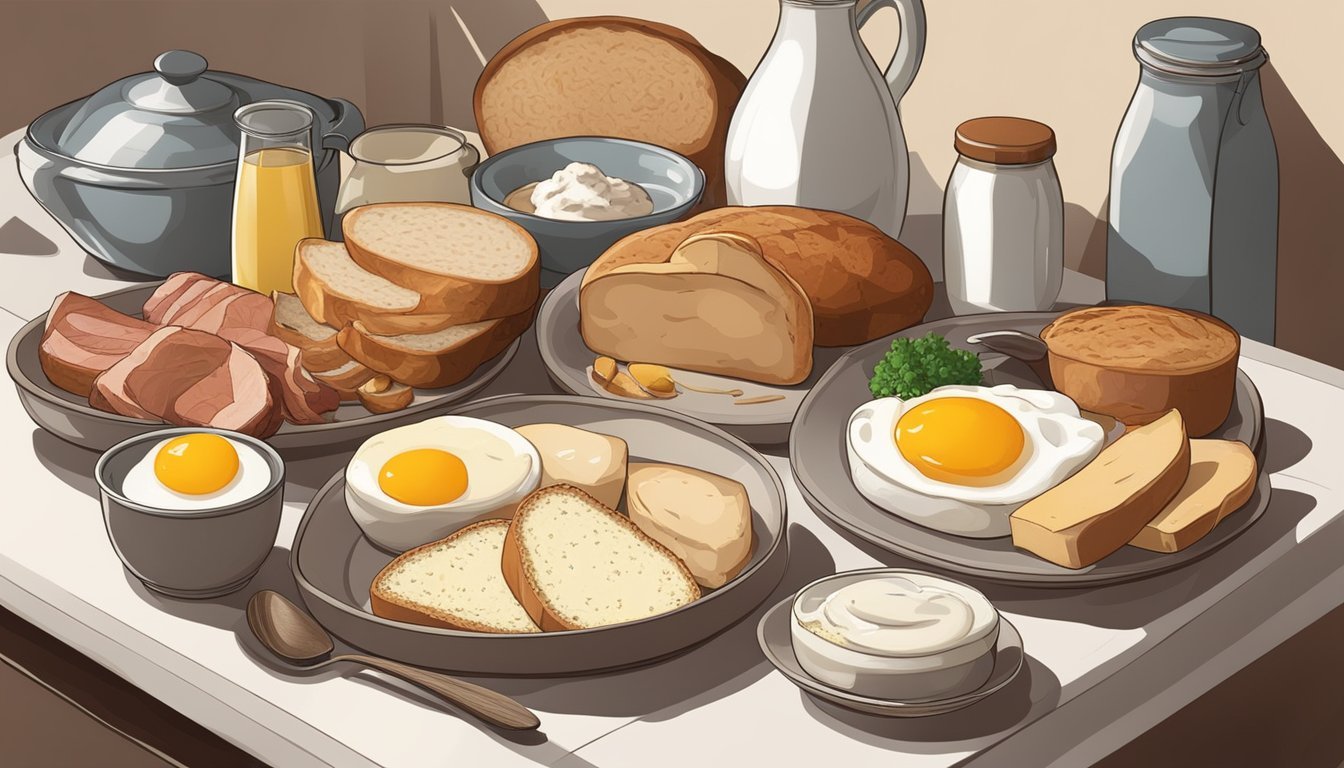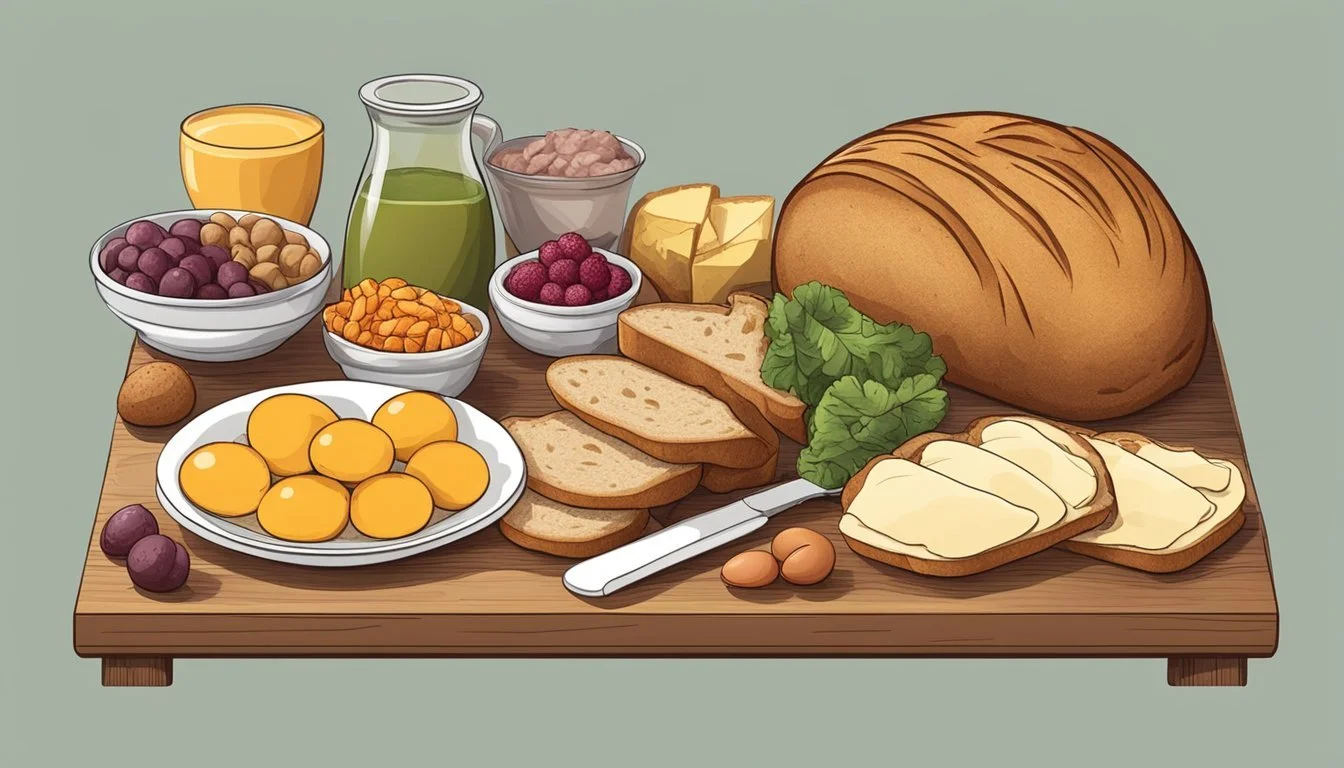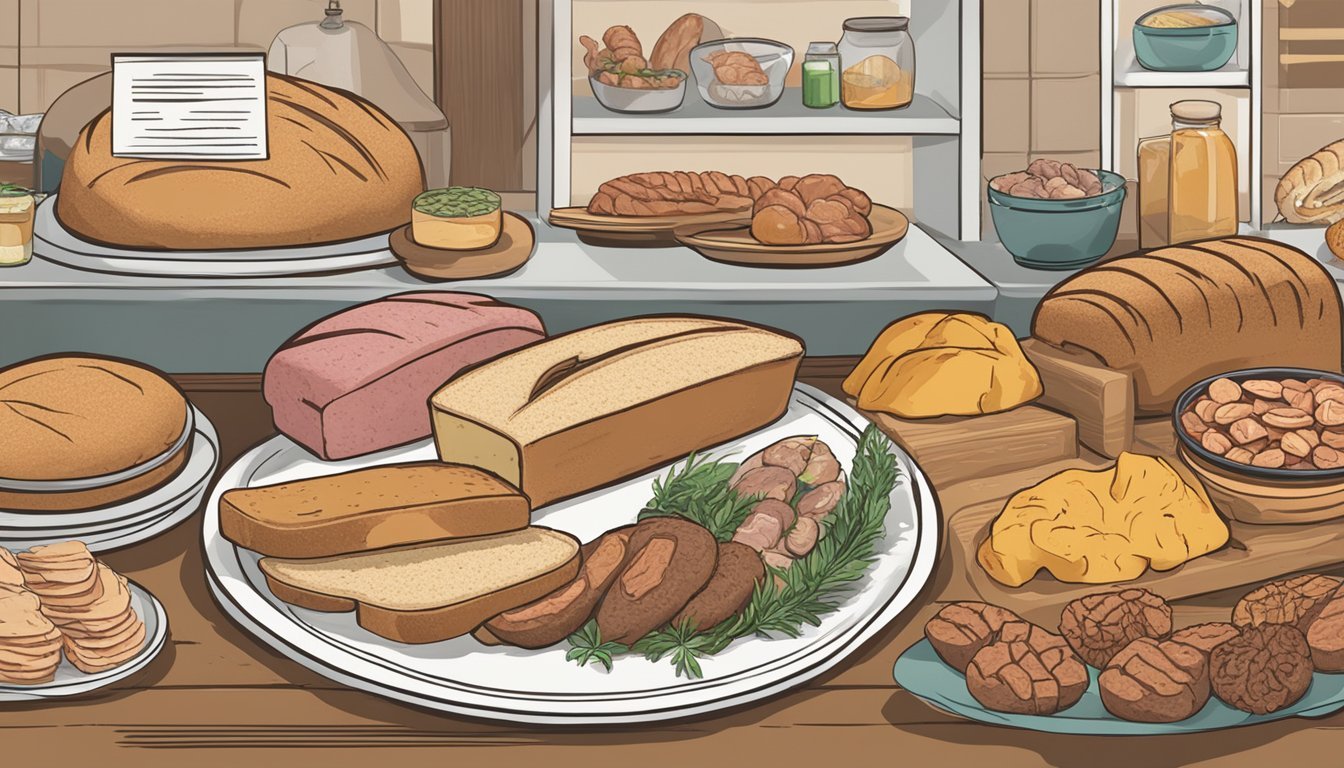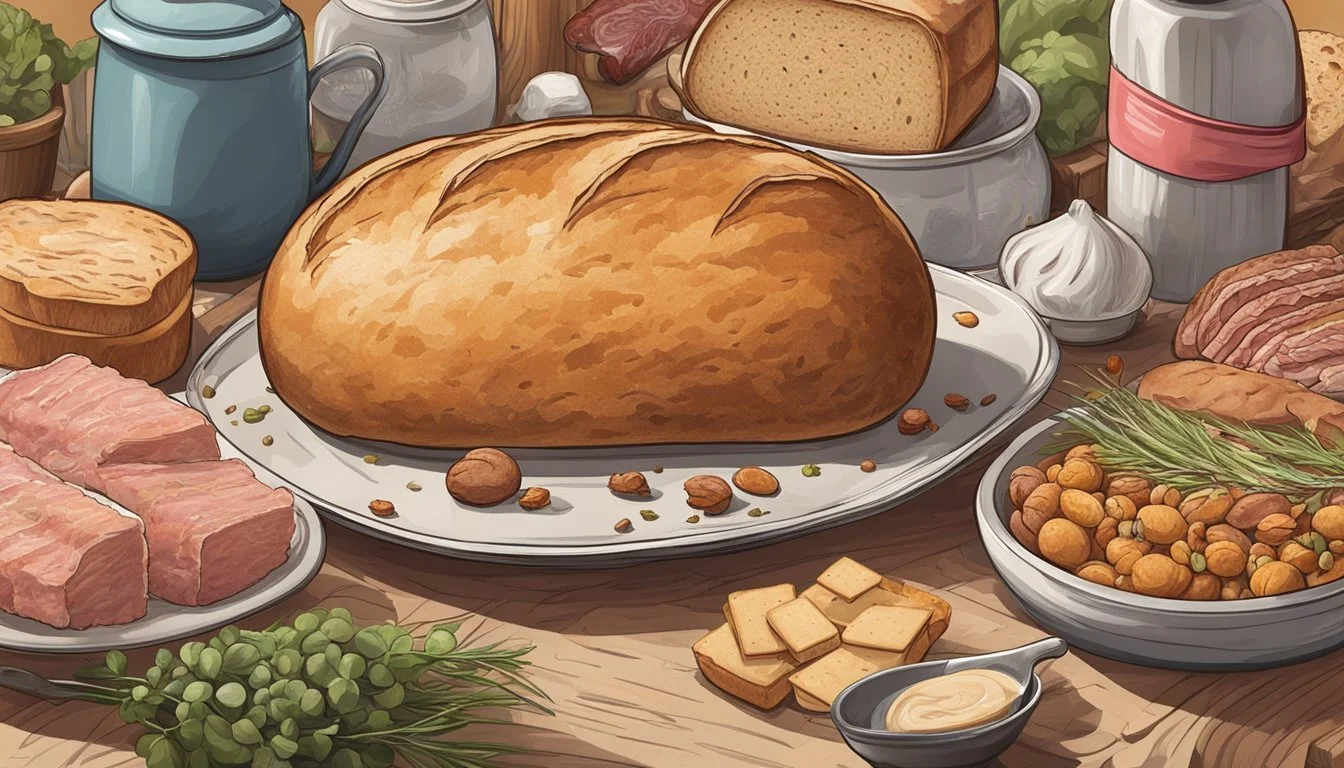Can You Eat Bread on Carnivore Diet?
Understanding Diet Restrictions
The carnivore diet is a restrictive regimen that focuses exclusively on the consumption of animal products, leaving out all plant-based foods. As such, traditional bread (What wine goes well with bread?), which is made from grains and therefore plant-based, does not fit within the dietary guidelines of a carnivore diet. Proponents of the carnivore diet argue that eliminating plant-based foods, including bread and other grain-based products, can help reduce inflammation and resolve various digestive issues.
However, some individuals following the carnivore diet may seek alternatives to traditional bread that align more closely with the diet's principles. Innovations like egg white bread, which aims to mimic the texture of traditional bread without using grains, have been introduced to provide variety while maintaining adherence to the carnivore diet. Yet, it's important to note that while such alternatives may offer a textural substitute, they are still fundamentally different from traditional bread and often involve a degree of processing that some purists may avoid.
The stance on eating bread or bread-like products on the carnivore diet ultimately depends on individual interpretation and the strictness with which one adheres to the diet's guidelines. While the diet's foundational philosophy excludes bread, personalized variations of the carnivore diet may incorporate specific animal-product-based alternatives to bread.
Understanding the Carnivore Diet
The carnivore diet focuses on consuming exclusively animal products and is often considered a zero-carb diet due to the exclusion of plant-based foods.
Defining Carnivore Diet
The carnivore diet is a restrictive regimen that consists solely of animal products. Practitioners eat primarily meat, including beef, pork, lamb, organ meats, and seafood. Poultry and some dairy products are also included. The diet operates on the principle of eliminating all plant-based foods, positioning itself as a zero-carb and high-fat diet that can potentially lead to a state of ketosis.
Benefits of a Meat-Based Diet
Advocates claim that the diet offers numerous health benefits ranging from weight loss to improved digestive health. The high intake of fats and proteins can lead to feelings of satiety and, for some, enhanced physical performance and mental clarity. It is posited that the carnivore diet may reduce inflammation and provide ample nutrients that are highly bioavailable.
Restrictions and Food Exclusions
Key to the carnivore diet is the complete avoidance of plant-derived foods, thereby excluding:
Carbohydrates: Grains, legumes, fruits, and vegetables.
Sugars: Processed or natural sugars.
Fibers: All plant-based fibers.
These exclusions make the diet naturally gluten-free and free from common allergens found in plant products. All caloric intake comes from animal products.
Carnivore Diet vs. Ketogenic Diet
While both the carnivore diet and the ketogenic diet limit carbohydrate intake, they have distinct differences. The ketogenic diet allows for low-carb vegetables and often includes plant-based fats like nuts and seeds. The primary goal of the ketogenic diet is to maintain ketosis, which is also a potential state reached in the carnivore diet due to its absence of carbohydrates. However, in the carnivore diet, the emphasis is on eating animal products without restriction on protein intake, which differs from the ketogenic diet's moderate protein approach.
Can You Eat Bread on a Carnivore Diet?
Exploring the carnivore diet reveals strict adherence to animal-based foods, making traditional bread, with its high carbohydrate content, a non-compliant option. Alternative solutions, known as "carnivore bread," have been developed to cater to this dietary pattern, marking a significant deviation from standard bread recipes.
Concept of Carnivore Bread
Carnivore bread is an innovative creation designed to align with the zero-carb mantra of the carnivore diet. Unlike conventional bread that contains wheat and other grains rich in carbohydrates, carnivore bread uses animal-based ingredients such as eggs and dairy to mimic the texture of traditional bread without the carbs. It enables individuals on this diet to enjoy a bread-like food without compromising their nutritional regimen.
Substitutes for Traditional Bread
Traditional bread, made from grain-based flours, is inherently rich in carbohydrates and therefore excluded from a carnivore diet. Substitutes for bread within this dietary context include:
Egg whites: Whipped to stiff peaks and combined with other ingredients for structure and fluffiness.
Animal products: Pureed meats or dairy are utilized to provide flavor and binding agent.
Zero-carb additives: Ingredients likeyeast or baking powder may be incorporated for leavening, though they must not add carbs.
The primary goal is to maintain a low-carb or zero-carb profile while achieving a palatable texture and taste reminiscent of bread.
Health Implications of Including Bread
When considering the health implications of including "bread" in a carnivore diet, it's important to differentiate between traditional and carnivore-specific bread:
Carbohydrates: Traditional bread is typically high in carbohydrates which is at odds with the core principles of a carnivore diet. The carnivore version seeks to eliminate these carbs to maintain the diet's low-carb, high-protein focus.
Nutritional values: Carnivore bread, while lower in carbs, still needs to be evaluated for its overall nutritional contribution, including protein, fats, and calories.
Dietary adjustment: Individuals must assess how the inclusion of carnivore bread aligns with their dietary goals and nutritional requirements.
While carnivore bread offers an alternative to bread cravings, it's imperative to consider how its consumption fits within the broader dietary framework centered on meat and animal products.
Carnivore Diet Food List
The Carnivore Diet revolves exclusively around animal products, focusing on high-protein and fat consumption while eliminating plant-based foods. It emphasizes on meat and animal fats as the primary food sources.
Meats and Protein Sources
Beef: All cuts, including ground meat and steaks, are central to the diet.
Pork: Pork rinds and bacon are commonly consumed for their high-fat content.
Fish: A variety of fish, including fatty fish for omega-3 fats, form part of the protein sources.
Seafood: Shellfish and other seafood are acceptable.
Organ Meats: These are recommended for their nutrient density.
Eggs: Whole eggs are a staple protein source.
Acceptable Fats on Carnivore Diet
Animal Fat: Tallow, lard, and suet are considered suitable fat options.
Dairy Fats: Butter and certain hard cheeses, preferably with low lactose content, can be included.
When it comes to getting the best deals, buying tallow and lard, online is the way to go!
Potential Inclusions and Controversies
Eggs and Dairy: Some adhere to a strict meat-only approach, while others include eggs and select dairy products.
Processed Meats: Products like bacon are often debated due to potential additives but are generally accepted if unprocessed.
Preparing Carnivore Diet-Friendly Bread
Crafting a loaf of bread that adheres to the strict requirements of the carnivore diet involves a meticulous selection of zero-carb ingredients, precise baking techniques, and thoughtful improvements to texture and flavor.
Key Ingredients for Zero-Carb Bread
For individuals on a carnivore diet, traditional bread is off-limits due to its carbohydrate content. However, a zero-carb bread can be achieved using:
Egg whites: The foundation of carnivore bread, providing structure without carbs.
Egg yolks: Often separated from whites, they can be included for added fat and richness.
Butter: Used to introduce fats, contributing to the bread's moisture and taste.
Cream of tartar: This stabilizes the egg whites, helping to maintain a firm texture.
Step-by-Step Baking Instructions
To prepare your carnivore-friendly bread, follow these steps:
Preheat the oven — typically between 320°F and 375°F (160°C to 190°C).
Line a baking sheet with parchment paper, essential to prevent sticking.
Separate the egg whites and yolks into different bowls (yolks may be reserved for other recipes or added for flavor).
Add a pinch of salt and cream of tartar to the whites and beat until stiff peaks form.
If using yolks or butter, blend these separately until smooth before combining with the egg whites.
Gently fold in the egg whites with other mixed ingredients to preserve airiness.
Pour the mixture onto the prepared baking sheet and shape into a loaf.
Bake until the bread is golden and firm to the touch.
For the most extensive selection, I suggest buying baking sheet and parchment paper online!
Texture and Flavor Enhancements
The primary challenge in creating a carnivore diet-friendly bread is achieving a desirable texture and flavor profile. Here are ways to enhance your bread:
For a lighter texture, ensure the egg whites are beaten to stiff peaks before folding into the other ingredients.
Mixing bowls should be clean and free of any fats which can prevent egg whites from reaching the desired volume.
To improve flavor, consider using seasonings like salt or animal-based spices if they align with your dietary choices.
Adapting Recipes for the Carnivore Diet
The carnivore diet emphasizes animal-based foods while excluding plant matter, demanding creativity to adapt familiar dishes. This section provides straightforward guidance on modifying traditional recipes for a zero-carb, high-fat eating plan and explores variations suited to this diet's unique constraints.
Modifications to Traditional Recipes
Modifying recipes to fit the carnivore diet often involves replacing plant-based ingredients with animal-based alternatives to maintain a state of ketosis. For instance, bread recipes, traditionally high in carbohydrates, can be transformed by substituting flour with dairy products like cheese or ghee, which contribute to the necessary high-fat content without disrupting ketosis.
Replace grain-based flours with dairy proteins; for example:
Ground pork rinds
Parmesan cheese, finely grated
Swap sugar and other sweeteners with small amounts of dairy that has a natural sweetness, such as whipped cream or ghee.
Bind ingredients with eggs to maintain the structure without adding carbs.
Skip the lines and order your ghee online for a stress-free shopping experience!
Carnivore Diet Recipe Variations
Variations of carnivore diet recipes are not only easy to make but also can be quick to prepare. Egg whites beaten to stiff peaks can serve as a base for a zero-carb bread, yielding a light and airy texture, while the addition of egg yolks and meats like ground pork ensures high nutritional value aligned with keto principles.
Carnivore Bread:
Ingredients: Eggs, Ground Pork or Beef, Butter or Ghee, optional: Cheddar Cheese.
Instructions: Whisk the egg whites into stiff peaks, blend yolks and meat, combine gently, bake at a moderate temperature until set.
Carnivore Flatbread:
Ingredients: Eggs, Cream Cheese or Greek Yogurt, Cheddar Cheese (optional).
Instructions: Mix eggs with dairy, spread on a baking sheet, bake until golden and firm.
Animal-based recipes often yield food that is not just aligned with the carnivore diet but also zero-carb, supporting a continuous state of ketosis, which is a cornerstone of the ketogenic lifestyle. Catering to individuals seeking nutritional values true to keto and carnivore diets, these variations can offer both satisfaction and variety.
Handling Cravings and Alternatives
When adhering to a strict carnivore diet, individuals may encounter cravings, particularly for bread and sweets. This section explores strategies for coping with these cravings and provides alternative snack ideas that align with the carnivore diet.
Coping with Sweet and Carb Cravings
Cravings for sweet and carb-rich foods can be a common challenge. They::
Stay Hydrated: Cravings can sometimes be confused with thirst. Drinking water is a straightforward way to help distinguish between actual hunger and a passing craving.
Balanced Fat Intake: Incorporate a variety of fats from sources like beef tallow and butter. This ensures satiety, potentially reducing the frequency and intensity of cravings.
Alternative Snack Ideas on Carnivore Diet
Those following a carnivore diet have several snack options that can substitute high-carb or sweet treats:
Zero Carb Bread: Made from egg whites, this bread provides a satisfying texture, similar to that of traditional bread, without the carbs.
Fatty Meats and Meatballs: These can be made in bulk and kept on hand for when hunger pangs strike.
Egg-Based Wraps: Substituting bread for an egg-based wrap can help hold over one's appetite with a boost of protein.
On a carnivore diet, avoiding processed snacks and focusing on high-quality, animal-based foods is key.
Storage and Preservation Techniques
Proper storage methods are vital to maintain the quality and freshness of homemade carnivore bread. These techniques ensure that every slice retains its intended flavor and texture.
Storing Homemade Carnivore Bread
When storing homemade carnivore bread, it's essential to let the bread cool completely before storage to prevent moisture buildup, which can lead to mold. Once cooled, the bread should be placed in an airtight container to keep out air and moisture. If the bread was made using a food processor or blender, ensuring no crumbs are left out is key to avoid attracting pests. The bread can be stored at room temperature for a couple of days, but if one plans to keep it for longer, utilizing a fridge or freezer is advisable.
Room Temperature: Keep in a cool, dry place for 2-3 days.
Refrigerator: Store in the fridge for up to one week.
Freezer: For long-term storage, slice and freeze for up to three months.
Best Practices for Freshness and Longevity
To maximize freshness and longevity, carnivore bread should be sliced prior to freezing; this allows one to thaw only the needed amount. Wrapping the bread tightly in plastic wrap or aluminum foil before placing it into an airtight container or a freezer bag can further prevent freezer burn.
Slicing: Slice bread before freezing for convenience.
Wrapping: Use plastic wrap or foil, then place in an airtight container or freezer bag.
Whether using a loaf pan or a bread pan, ensuring the bread is stored correctly after baking will maintain its quality, giving one the best experience of this zero-carb, protein-rich bread.
Health Considerations and Risks
The carnivore diet excludes bread, focusing solely on animal products, which may impose certain health considerations and risks due to its zero-carb nature.
Effects of a Zero-Carb Diet on Health
A zero-carb diet, central to the carnivore diet, can have profound effects on one's health. It eliminates all carbohydrate sources, including fruits, vegetables, nuts, and seeds, which traditionally supply dietary fiber, essential vitamins, and antioxidants. This can lead to potential deficiencies and may disrupt gut microbiota due to a lack of fiber. Additionally, the diet's emphasis on high intake of saturated fats and cholesterol from animal foods may raise concerns about increased risk for heart disease.
Managing Nutrition on a Carnivore Diet
When adhering to a carnivore diet, individuals must be mindful of their nutritional intake to address potential deficiencies. It is critical to include a variety of animal-based foods to obtain a spectrum of nutrients. For instance:
Organ Meats: High in vitamin B12, iron, and other minerals
Fatty Fish: Provides omega-3 fatty acids and vitamin D
Eggs: Offer a good balance of fat and proteins
Monitoring and managing intake of nutrients is necessary to mitigate health problems such as inflammation and to achieve the healing claims associated with a carnivore diet. However, the long-term sustainability of such a restrictive regimen remains a subject of debate in nutrition science.
Frequently Asked Questions
Can one consume bread on the carnivore diet?
No, traditional bread made from grains is not permitted on the carnivore diet, as it only includes animal products.
Are there any bread alternatives for someone on the carnivore diet?
Yes, one can try egg white bread, which utilizes egg whites to achieve a bread-like texture without carbs. Ingredients like butter and salt may be added for flavor.
Can dairy products be consumed on the carnivore diet?
Some people include dairy products like cheese, butter, and ghee in their carnivore diet, but others may exclude them due to personal intolerances or to maintain strict adherence.
Is honey allowed on the carnivore diet?
No, honey is not allowed as it is derived from plants.
Does the carnivore diet align with ketogenic principles?
Yes, the carnivore diet is similar to the ketogenic diet in that it is low in carbs and can promote a state of ketosis; however, it is more restrictive as it excludes plant foods entirely.
Is almond milk acceptable on the carnivore diet?
No, almond milk is made from almonds, which are a plant-based food and thus excluded from the carnivore diet.
How is the carnivore diet different from the paleo diet?
While both diets emphasize whole foods, the paleo diet includes fruits and vegetables, whereas the carnivore diet strictly focuses on animal products.
What is a 'keto carnivore' diet?
A keto carnivore diet combines principles from both the ketogenic and carnivore diets, focusing on high-fat, animal-based foods that support ketosis.
It's advisable to consult with a nutritionist or healthcare provider before starting any new diet, especially one that involves significant dietary restrictions.

